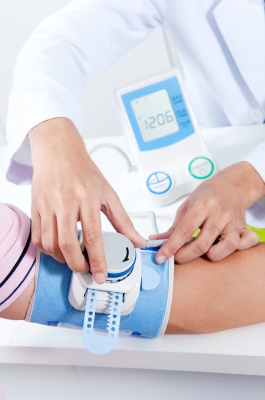Dining Out and High Blood Pressure
 Did you know dining out increases your risk for high blood pressure?
Did you know dining out increases your risk for high blood pressure?
Why?
Restaurant foods, whether it be a sit down meal or drive-thru, are typically high in both salt and fat.
A study published in the American Journal of Hypertension is the first to show a direct connection between dining out and high blood pressure.
Up to this point, studies have linked dining out to a higher intake of calories, salt, and saturated fat…all of which are linked to high blood pressure.
Researchers focused on young adults. High blood pressure earlier in life has been associated with future high blood pressure and heart disease risks. Researchers wanted to determine the impact of lifestyle factors on prehypertension and hypertension in young adults.
Prehypertension is defined as a systolic blood pressure between 120-139mm Hg and/or a diastolic blood pressure between 80-89mm Hg. Hypertension — another term for high blood pressure – is defined as a systolic blood pressure greater than or equal to 140mm Hg and/or a diastolic blood pressure greater than or equal to 90mm Hg.
Please note the “and/or” used above. Both numbers do not have to be elevated to be diagnosed with prehypertension or hypertension. If systolic alone is high, that can lead to a diagnosis. If diastolic alone is high the same applies.
Continue reading
Do you prepare meals at home?
 According to the Centers for Disease Control and Prevention, heart disease is the leading cause of death in the US. Every year, 720,000 American’s have a heart attack. Every year, about 600,000 people in the US die due to heart disease.
According to the Centers for Disease Control and Prevention, heart disease is the leading cause of death in the US. Every year, 720,000 American’s have a heart attack. Every year, about 600,000 people in the US die due to heart disease.
Alarming and hits close to home, right? Speaking for myself, I know many individuals who live with heart disease, have had a heart attack, and/or died due to heart disease. I believe it’s safe to say that rings true for most of us.
So then, why do our behaviors and habits not support healthier choices?
I have had three instances in the past week that have brought the issue of preparing home cooked meals front and center.
One was a good article I read in Time. Another was a comment from my aunt. They had an office potluck and out of all the dishes only two were homemade. The rest: store bought.
I don’t consider myself to be a great cook, but I do cook. Everyday.
Do you?
Steps to Lose Weight
Here are a few steps to promote weight loss:
- Increase physical activity throughout your daily routine (i.e. park further from your office door, take the stairs instead of the elevator)
- Cut back on dining out (i.e. pack a lunch for work)
- Keep fresh fruits and vegetables within reach
- Clean out your cupboards and eliminate foods that don’t support heart health
- Cut back on TV time (just how many hours do you log each day in front of the tv?)
The list of steps you can take to promote weight loss and reduce heart disease risk goes on and on. Take it one step and a time!
Receive 1-A-Week Weight Loss Tips at http://www.weightlosswithlisa.com.
All the best,
Lisa Nelson RD
https://www.lisanelsonrd.com
Heart Health – Are you on the right path?
Did you know that every March since the 1970’s we have been celebrating National Nutrition Month? For those in a healthcare profession this is a time extra emphasize is placed on nutrition education and getting the message out to you. How can you get the most out of this time focused on nutrition? Every March provides you an opportunity to take an annual inventory of your nutrition habits. Are you “fueling” your body the way you want to ensure weight loss and heart health?
If this is the first time you have taken “inventory” focus on just a few areas. I will help you narrow it down by starting with beverages, snacks, and dining out. Do you select the healthiest choices in these areas?
Beverages
What is sitting on the corner of your desk or in the cup holder in your car? Soda, coffee, water? If you are a soda drinker, consider what you can do to cut back. A 12 oz. can of regular soda contains about 150 calories. If you drink one can everyday you consume 4200 soda calories each month and 50,400 calories each year. This is equal to an extra 14 ½ pounds of body weight. What are you adding to your coffee? Frequent Starbucks consumption, or adding cream and sugar to your coffee means extra calories expanding your waistline. Positive steps towards being healthier – Switch to diet soda to drastically decrease sugar and calorie intake. Try nonfat dairy creamers, less sugar and cream, or adding sugar substitutes to your coffee. Save dollars and calories by brewing coffee at home and have Starbucks for the occasional treat. If you are toting around a bottle of water you are doing great. Everyone should be consuming six to eight 8-oz. glasses of water daily. Water is the beverage our bodies need and crave to keep us replenished and feeling our best.
Snacks
Are you heading for the vending machine for your afternoon snack? Most vending machines contain high fat and high sodium products. Forgo the Swiss cakes by bringing snacks to work with you. You know you are going to have an afternoon craving, so plan ahead. Some good snack choices include fruit, yogurt, crackers and cheese, or a handful of nuts.
Dining Out
Is the drive in lane your destination several evenings after a long day of work? Most fast food is deep fat fried and includes significant fat, calories, and sodium. If you are tired and do not want to deal with cooking a meal at home you can select healthier options at the drive through. Opt for products that are not breaded, such as a grilled chicken sandwich. Forgo the fries and get a yogurt, side salad, or fruit to go with your sandwich. Your heart will thank you.
Just remember when March rolls around next year to take another inventory. Expand to other areas, such as fruit and veggie intake, omega 3’s, whole grains, etc. If you evaluate how you are doing every year and make modifications you are taking positive steps towards a healthy long life.
All the best,
Lisa Nelson RD
Be Heart Healthy and Lose Weight




